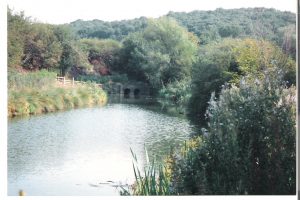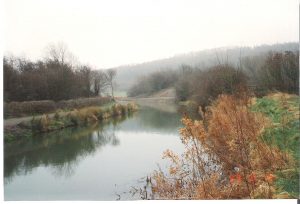Woolsthorpe Railway Embankment
In 1992, after years of negotiation with British Rail, permission was granted to allow the disused iron stone railway embankment to be removed.
Ore was transported away from the quarries around Harlaxton and Harston by rail, joining the Nottingham-Grantham line at Muston. Quarrying ceased in the area in 1976.
Initially, the line crossed the canal by means of a wooden trestle bridge at Woolsthorpe. When this became unsound, this bridge was enshrouded within an embankment with the provision of pipe culverts to allow water flow – blocking the canal to navigation.
Negotiations were ‘interesting’ at times – at one point, British Rail insisted, that if they ever needed to re-open the line, then the canal society would have to foot the bill for a bridge over the canal – to the tune of £1.5m. Clearly this was not possible, and it took the intervention of Quinten Davies MP to arrive at a more favourable solution!
The society now had the go ahead to remove the embankment. To put it into context; this embankment blocked the canal between Locks 17 & 18. These locks, along with Lock 16, were undergoing restoration – the embankment had to go if these locks were ever to be used.
The removal of this embankment was a huge undertaking for a comparatively small volunteer workforce, but after a good deal of soul searching and navel gazing we go stuck in.
The enormity of the task will become apparent: An excavator was hired from British Waterways, and three big dumpers obtained from a plant hire firm. The Waterway Recovery Group were also on site, primarily working on Lock 18 – but they assisted in breaking up the concrete culverts in the embankment.
This was a real team effort; local farmers assisted by carting away the spoil – 10 tons at a time – 600 tons a day – the whole operation taking 3 weeks!
Job done – another obstacle out of the way – another step towards full navigation!
Interesting fact: The wooden trestle bridge was still in the embankment – some of the recovered timber was used in the construction of Casthorpe Bridle Bridge.

before – doesn’t really show the enormity of the task!

open for navigation!
